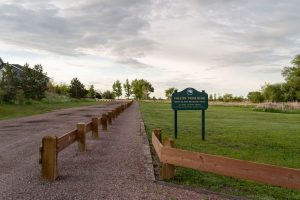Arthritis is joint inflammation often accompanied by pain, swelling, stiffness and deformity. The most common form of arthritis is osteoarthritis, also known as degenerative joint disease. Osteoarthritis (OA) is a slow, progressive degeneration of joint structures, which can lead to chronic pain, deformity, loss of function, loss of mobility and loss of independence.The most commonly involved joints affected by OA are hip, knee, lumbar spine, cervical spine, thumb and foot.Risk factors include:
- Age: 60-85 percent of the population age 60 years and older has some degree of articular cartilage damage in a number of their joints. Only 15-25 percent of these people have symptoms.
- Gender: Males make up the majority of those afflicted with osteoarthritis before age 45, where as females experience this disorder more frequently after age 55.
- Obesity
- Overuse/abuse of joints: sports or strenuous occupations
- Trauma
Signs and symptoms of osteoarthritis include sudden onset, stiffness after a period of inactivity, 30 minutes for stiffness to begin to resolve, crepitus, osteophyte formation and loss of joint surface congruity.While there is not currently a cure for OA, many things can be done to alleviate the symptoms and lessen the dysfunction. Exercise is vital to maintaining an active lifestyle with arthritis.With OA, too much sitting around can be devastating as de-conditioning can occur, and a sedentary lifestyle will only facilitate joint stiffness and the other symptoms listed above. Atrophy (the wasting away of unused muscle and bone) will occur, which can contribute to weakness, decreased tone, a loss of flexibility and increased difficulty with activities of daily living.In moderation, exercise can:
- strengthen the supporting structures (muscles, tendons)
- increase range of motion
- provide shock absorption
- improve flexibility
- increase quality of movement
- improve joint mechanics
- improve physical capabilities, making activities of daily living easier
According to the Arthritis Foundation, exercise can also improve your overall health and well being. Exercise can increase your energy, improve your sleeping, help with weight control and decrease depression.Before starting an exercise routine, seek professional advice from a health care provider because exercise programs should be individualized to your needs and focused on your areas of deficiency.Please keep these tips in mind while exercising: Gradually increase intensity; never exercise through joint pain; listen to your body; gradually increase time period; and stop exercising if you feel dizzy or short of breath.Experts can help you learn exactly what you should be doing for your specific problem(s). Seek advice from a physical therapist or exercise physiologist who specializes in rehabilitation or has special educational training in arthritis. Beware of instructors, personal trainers and other fitness personnel who are used to working with healthy tissues and who may not understand arthritis.If you have any questions, or would like to start an exercise program, please contact Falcon Physical Therapy and Fitness at 495-3133. Next month, see Part II: Rheumatoid Arthritis.
For more information, visit www.arthritis.org.





